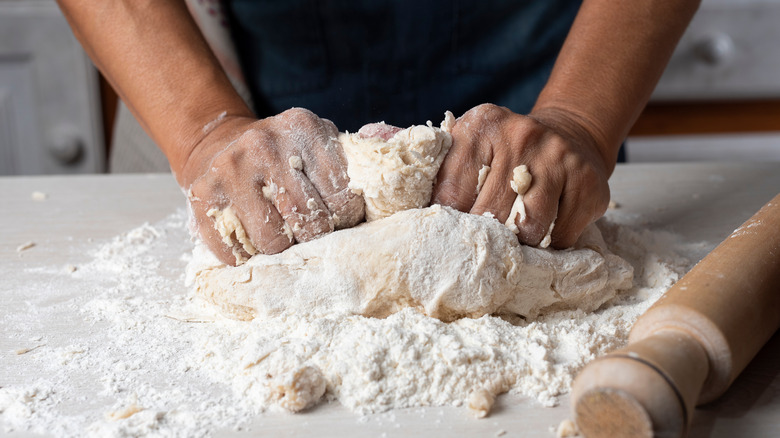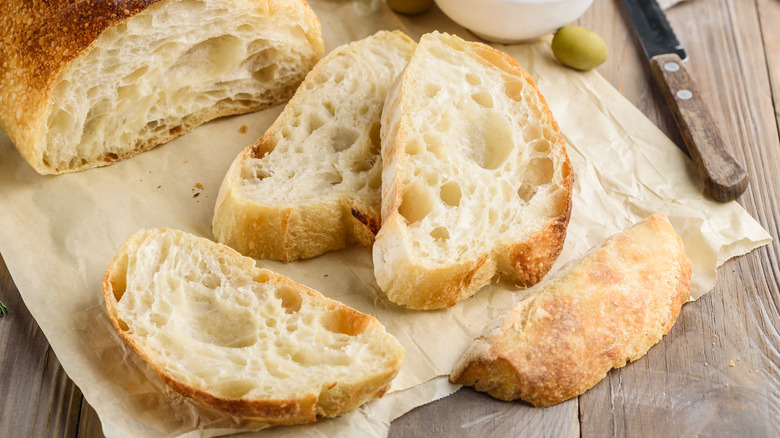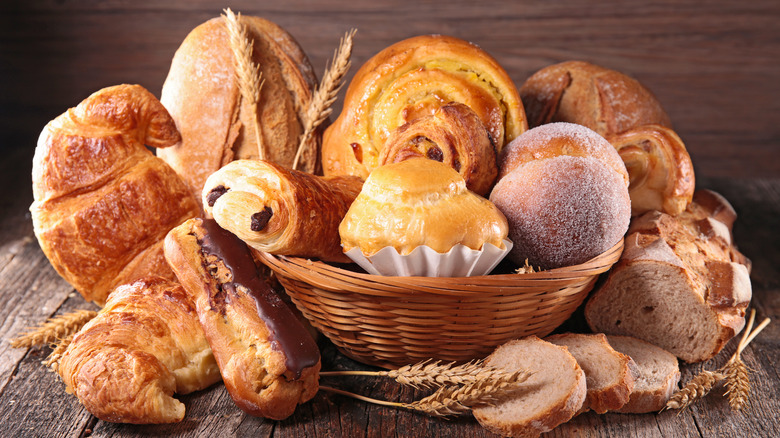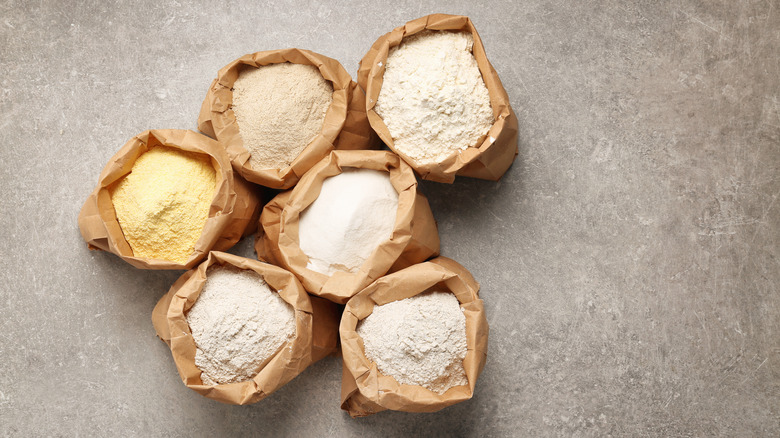What Is Strong Flour And Is It Different From Bread Flour?
We may receive a commission on purchases made from links.
If you've ever watched an episode of "The Great British Baking Show," chances are you've heard Mary Berry call them biscuits instead of cookies, bakes instead of desserts, or sponge instead of cake. Some are more well-known than others, but baking terms and ingredients often have different names in the UK and the US, and this applies to flour, too. According to Good to Know's guide to British and American cooking terminology, strong flour is simply what is referred to as bread flour in the US. British plain flour is US all-purpose flour, British wholemeal flour is US whole wheat flour, and British self-raising flour is called self-rising flour in the United States.
It can be frustrating when you realize you can't find an ingredient in your kitchen, let alone in your local grocery store, so next time you come across a recipe that calls for strong flour, there's no need to head to an international supermarket to track it down. Aside from the name, bread flour and strong flour are exactly the same: You'll find it right next to the all-purpose flour in the baking aisle.
Why is strong flour called 'bread flour' in the US?
Strong flour contains 11-13% protein, while all-purpose flour contains 9-11% protein (via Bon Appétit). On paper it might not seem like it would make that big of a difference, but in the mixing bowl and in the oven, it certainly does. This is because the amount of protein in flour directly corresponds to the amount of gluten that forms when activated by water. "Gluten gives baked goods structure — the more gluten, the 'stronger' the flour," Bon Appétit explained.
All high-gluten baked goods require strong, high-protein flour, and bread happens to be the most common one — hence it's called bread flour in the US. Gluten is particularly crucial in bread baking, because it's what makes the dough stretchy and elastic. When the dough is kneaded, the resulting network of gluten strands traps and allows air pockets to form, ultimately producing a chewy yet fluffy texture when baked. Those characteristic holes you see in baguettes and loaves of ciabatta (pictured above) only exist because of the amount of gluten in the dough.
When should you bake with strong flour instead of all purpose flour?
Even though strong flour is technically called bread flour in the US, that doesn't mean it should be used exclusively in bread recipes. In fact, some breads like biscuits and Irish soda bread are better with all-purpose flour, while some desserts like cinnamon rolls and beignets are better with strong flour. It all comes down to the texture you want to produce. You wouldn't want to eat a cake that's as chewy as a bagel, or alternatively, a bagel that's as soft as a cake. But for recipes like pizza dough or donuts, you could go either way, depending on your preference. Bon Appétit's rule of thumb, therefore, is to use strong flour when you want a chewier end product, all-purpose flour when you want a light and tender one, or a mix of both when you want a balance.
If you're worried about your dessert being too bread-like, but you still want it to have a chewier texture, rest assured; according to The Pioneer Woman, strong flour doesn't rise any more than all-purpose flour. Unless you're over-kneading the dough and adding extra yeast, your dessert will not turn into a loaf of bread just by using strong flour. The only outcome that's affected is the texture.
What can you substitute for strong flour?
Cake flour is basically all-purpose flour with cornstarch, while self-rising flour is basically all-purpose flour with baking powder and salt, but strong flour isn't so easy to substitute or DIY at home. Because recipes that require strong flour rely heavily on the protein content, it's important to use a substitute that has a comparable one. MasterClass recommended using either spelt flour, 00 flour, or wheat flour. These flours are as high in protein as strong flour; however, they're not perfectly interchangeable, as they contain "different ratios of gliadin and glutenin than the standard hard wheat used to make bread flour." Compared to strong flour, spelt flour is nuttier and 00 flour is slightly softer (but not as soft as all-purpose). Wheat flour is a lot denser, although this can be accommodated for through the addition of more liquid and a longer resting period.
Every flour is different, so if you want to experiment with texture in your baked goods, strong flour is definitely the key. Even if you're not baking bread, it's still a great addition to your pantry — just make sure to look for "bread flour" instead of strong flour if you're in the US.



